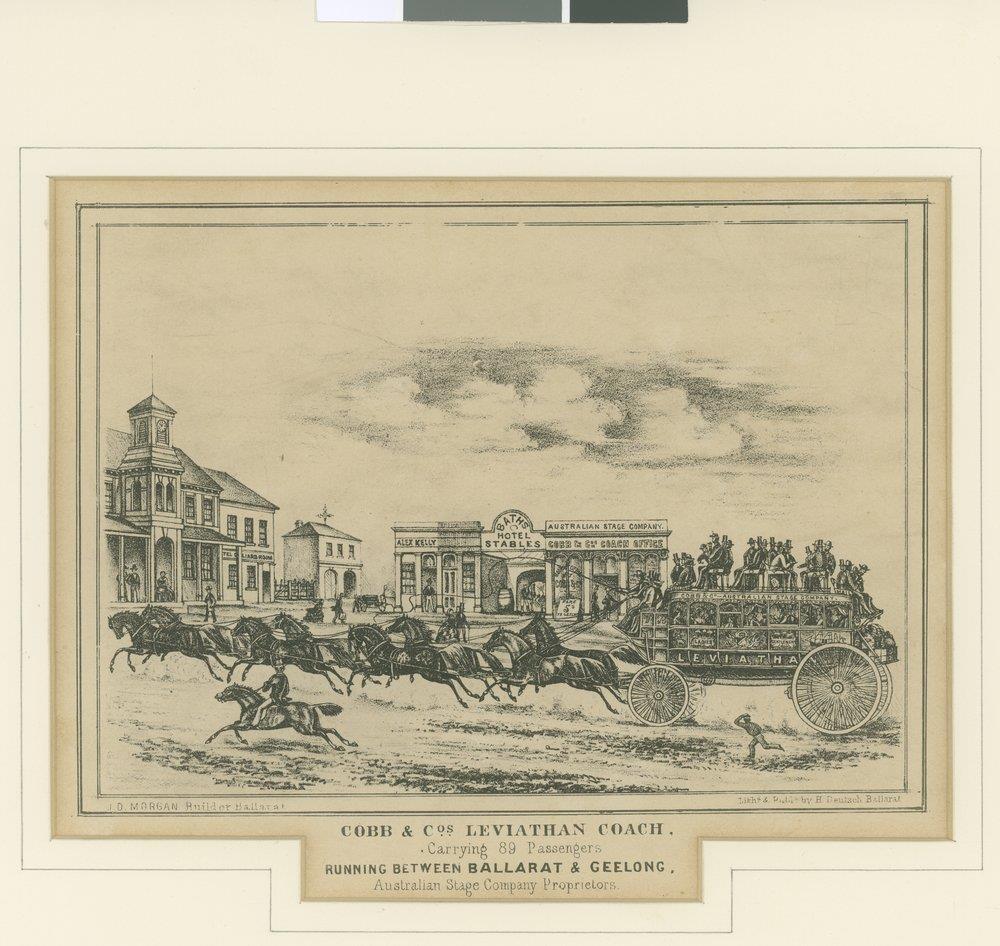
Edward Devine (1833?-1908), coach driver, was born probably on 10 August 1833 at Brighton, Van Diemen's Land, son of Thomas Devine, a free migrant who became a farmer at Cove Hill, near Brighton. Edward went to Victoria as a youth and in 1854 was driving coaches on the Geelong-Ballarat Road. After Cobb & Co. acquired this route, Devine soon became one of their best-known drivers. For a time he drove the 'Leviathan' coach, the largest to appear in Australia, and by 1862 he was earning the very high wage of 17 a week. In that year he was assigned to drive H. H. Stephenson's cricketers, the first All-England team to visit Australia, on their tour of Victoria. His spectacular handling of a new coach with twelve magnificent light greys won him widespread fame. Something of a showman, he drove the cricketers right on to the oval at a match in Geelong. When the tour ended, the Englishmen presented him with a purse of 300 sovereigns at a complimentary dinner. In 1863 Devine went to New Zealand, where for fifteen years he drove for Cobb & Co., first on the South Road out of Dunedin, and later on the North Road from Dunedin to Palmerston and Oamaru. He retired from coaching in New Zealand in 1878, reputedly warning his successor to 'mind the peat bog, and give my love to the tussocks'.
Devine acquired his nickname of 'Cabbage Tree Ned' by wearing a hat made from the fibrous leaves of the cabbage palm. A photograph taken in New Zealand shows that he was of medium build with a strong, broad face, square chin, straight nose and deep-set eyes. His generosity, free-spending habits and fund of tall stories enhanced his popularity; but he had weaknesses. A casual attitude to such details as way bills, a quick temper and a passion for practical jokes, some rather unfair, probably made him seem more human against the background of his unequalled skill as a whip, his shrewd judgment of horses and his calmness in emergencies. Stories about his achievements were legion. Once he drove a team of twenty-two with four postilions. Another time he was descending Fyansford Hill near Geelong when his horses bolted; Devine kept lashing them into greater speed to prevent the coach from over-running the wheelers until they could be safely pulled up on the opposite hill.
Devine's activities after 1878 are obscure and difficult to authenticate. He has been credited with a little more coach driving, spells of work as a barman and farm labourer, travelling with a stallion, running a livery stable in Melbourne and drifting to the Murchison goldfields in Western Australia. Certainly at Ballarat he gave an exhibition drive with an eight-horse team harnessed to a Cobb & Co. coach, and on 12 July 1904 was admitted to the Ballarat Benevolent Asylum. As driver of the institution's wagonette, he became a familiar figure on the city's streets. He died aged 71 and unmarried on 18 December 1908. Years later he was found to have been buried in an obscure corner of the Ballarat new cemetery. Admirers in Australia and New Zealand supported the appeal of a Memorial Committee to raise funds for his remains to be moved to a more prominent location with a fitting monument. On 7 February 1937 the new tomb with a distinctive headstone was unveiled by Frank Smiley, president of the Cobb & Co.'s Old Coach Drivers' Association.
Correct Davent your go


